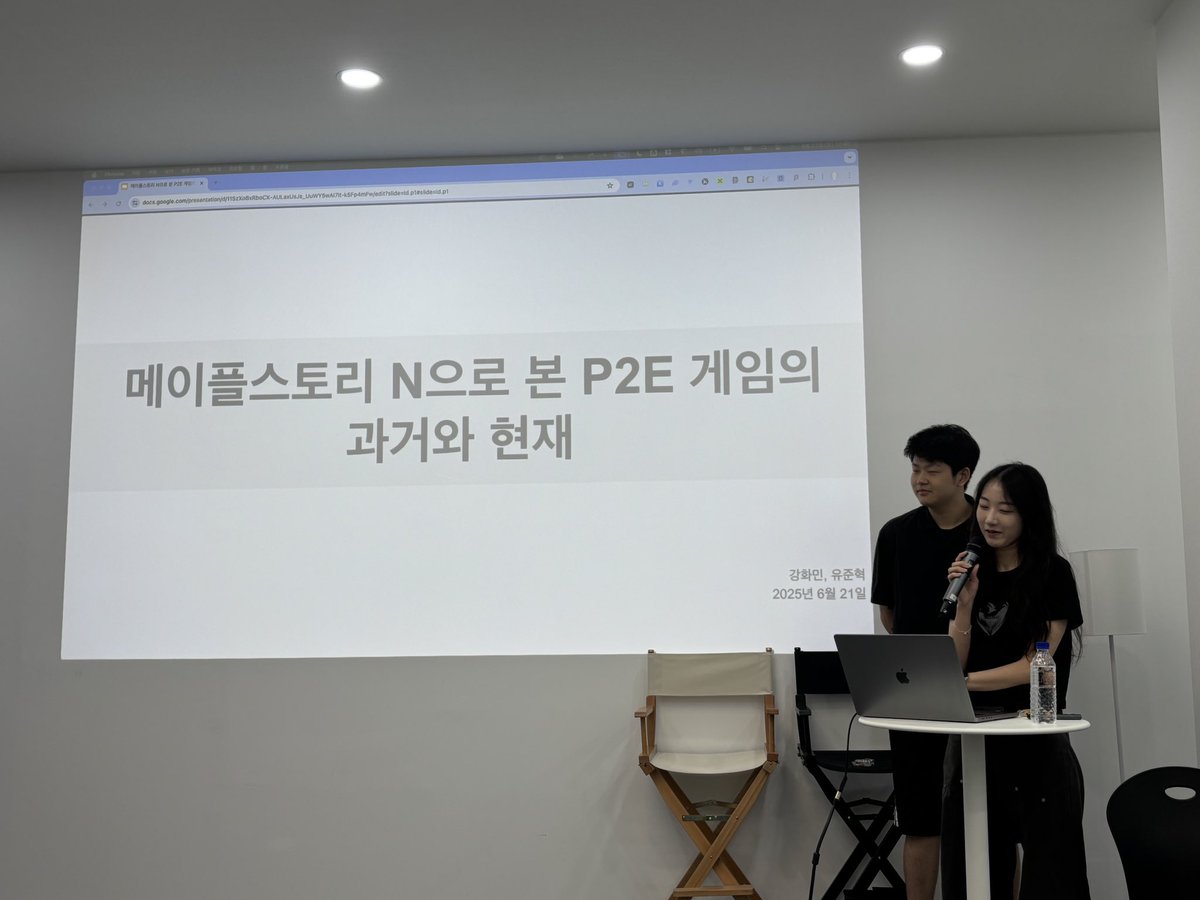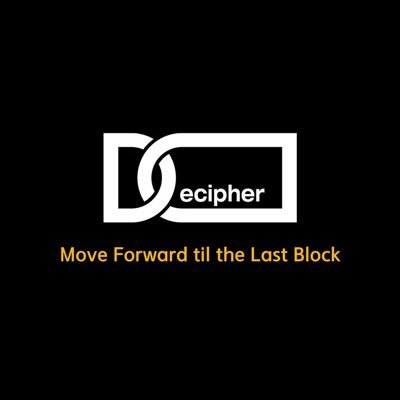< The Past and Present of P2E Games Viewed Through MapleStory N>
This week, Min Hyung-ki and Yoo Jun-hyuk (@Kvn_Yoo) from the Decipher blockchain club at Seoul National University presented a two-part discussion on the past and present of P2E games viewed through MapleStory N.
This thread is a TL;DR, and you can find more detailed information related to Part 1 in the Decipher Medium article linked at the top of the tweet.
(The weekly session is based on a pre-selected topic for the presentation.)
Venue support: B-Harvest @B__Harvest
In Part 1, we will look at the background and structural limitations of the P2E model, as well as the process through which MapleStory N emerged as a new attempt. In Part 2, we will analyze the on-chain data of MapleStory N and evaluate the effectiveness of the abuse response strategies, focusing on the actual operational structure and challenges.
1/
The Play-to-Earn (P2E) model gained attention from gamers and investors worldwide with its fresh idea of earning real rewards like cryptocurrencies through gameplay. Especially during the COVID-19 pandemic, Axie Infinity became so widespread in developing countries that it was considered a job in itself.
2/
The market reacted enthusiastically, with global revenue from P2E games reaching approximately $2.32 billion in the third quarter of 2021, and over $2.5 billion in funding flowing into P2E-related startups in the first quarter of 2022. In just a few years, blockchain gaming has established itself as an industry where large-scale investments are made, rather than just a simple experiment.
3/
However, behind this rapid growth lies a structure focused more on rewards than on gameplay, along with various risks. Most P2E games require upfront investments such as initial NFT purchases and token staking, leading players to focus on profit acquisition rather than gameplay. This structure is inevitably reliant on new user influx, and issues such as inflation from unlimited issuance of reward tokens, lack of gameplay, regulatory risks, and security problems have significantly threatened the sustainability of the market.
4/
In this situation, Nexon launched MapleStory N based on the MapleStory IP, which has over 20 years of global fandom, gaining attention as a new attempt in the P2E market. This project goes beyond simple IP utilization, securing performance and scalability optimized for the blockchain environment using the Henesys Mainnet built on Avalanche's Subnet. The Henesys Mainnet minimizes bottlenecks in on-chain asset flow with processing performance of over 4,500 transactions per second, low fees, and Teleporter-based asset transfers, implementing a blockchain infrastructure that does not compromise gameplay and user experience.
5/
MapleStory N is differentiated not just by its technical performance but also as a Legacy-based Web3 game that possesses gameplay, recognition, and completeness. During the testing period, it demonstrated potential with over 31.5 million transactions, more than 970,000 wallet creations, and a user retention rate close to 50%.
6/
The MSU ecosystem consists of three asset pillars: NFT, NXPC, and NESO. NXPC has a fixed supply of 1 billion, a halving issuance structure, and a user reward-centered distribution to suppress inflation, realizing a circular economic structure through mechanisms directly exchangeable with NFTs (NXPC Fission) and NFT to NXPC conversion (Item Fusion). NESO is the in-game currency, obtainable through content rewards and hunting, and connects on-chain and off-chain asset flows through a smart contract-based exchange (Swap & Warp) at a ratio of 1:100,000 with NXPC. NFTs are utilized as game assets such as characters and equipment and can also be used in external marketplaces or communities.
7/
NXPC has a total limited supply of 1 billion, a halving structure, NFT supply limitations, and a dynamic demand-supply balance mechanism to suppress inflation, allocating 80% of the total supply to user and creator contribution rewards, aiming for decentralized governance. The initial circulation is low, and the team/advisor share is locked up at less than 3%, which is designed to minimize insider risk.
8/
MapleStory N addresses the structural limitations of existing P2E models and presents a next-generation Web3 game model based on a strong IP and meticulously designed tokenomics. Utilizing the well-known IP of MapleStory, which has built a global fandom for over 20 years, it serves as a foundation not just for attracting investments but also for drawing in users who genuinely want to play the game.

9/
Additionally, NXPC's total supply limit, halving issuance structure, and NFT supply control mechanism are focused on suppressing inflation and maintaining asset value stability, while the exchange structure between NFTs and tokens allows for a more organic connection of asset circulation among users. Above all, the design that distributes 80% of the total tokens to users and creators, while also considering future governance participation structures, demonstrates a user-centric decentralized ecosystem.
10/
Of course, since the project is still in the early stages of its official launch, verification of the continuous expansion potential of the content, long-term user acquisition strategy, and the realization of the roadmap will require time. However, the fact that it does not simply repeat a reward-centered economic structure, but instead incorporates new attempts that consider both gameplay and sustainability, suggests that MapleStory N has the potential to establish itself as a noteworthy Web3 case in the stagnant P2E market.
8.47K
5
The content on this page is provided by third parties. Unless otherwise stated, OKX is not the author of the cited article(s) and does not claim any copyright in the materials. The content is provided for informational purposes only and does not represent the views of OKX. It is not intended to be an endorsement of any kind and should not be considered investment advice or a solicitation to buy or sell digital assets. To the extent generative AI is utilized to provide summaries or other information, such AI generated content may be inaccurate or inconsistent. Please read the linked article for more details and information. OKX is not responsible for content hosted on third party sites. Digital asset holdings, including stablecoins and NFTs, involve a high degree of risk and can fluctuate greatly. You should carefully consider whether trading or holding digital assets is suitable for you in light of your financial condition.

